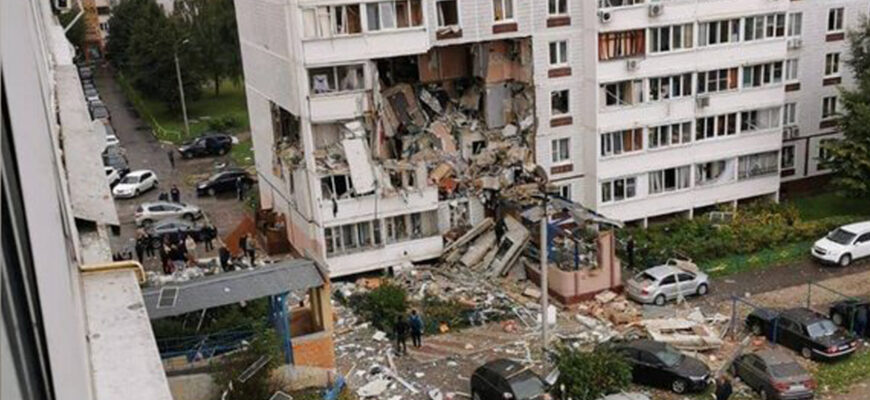In the quiet hours of a recent morning, the city of Angarsk in Russia’s Irkutsk region was abruptly awakened by a powerful gas explosion in a residential building. The incident, which unfolded on the second floor of an apartment block, left two individuals injured and dozens displaced, casting a stark light on the often-overlooked dangers lurking within our domestic spaces.
The Blast That Shattered Serenity
The incident occurred in the 12th microdistrict of Angarsk, disrupting the predawn calm. What began as a routine night for the residents quickly spiraled into a scene of urgent chaos as the force of the explosion ripped through a second-story apartment. The sound alone would have been enough to jolt anyone awake, signaling an immediate and significant danger.
Emergency services were quick to respond, arriving at a scene where the structural integrity of the building was a primary concern. The initial assessment confirmed the grave nature of the situation: a domestic gas explosion, a stark reminder of the volatile potential housed within our homes.
Human Cost and Immediate Aftermath
While the physical damage to the building was evident, the human toll quickly became the focal point. Two residents suffered injuries: a 40-year-old man was hospitalized with a fractured spine, an injury that speaks volumes about the sheer force of the blast. Simultaneously, a 12-year-old girl was diagnosed with a concussion, a frightening experience for someone so young, highlighting the indiscriminate nature of such accidents.
In the wake of the explosion, immediate action was taken to ensure the safety of other residents. The stairwell where the blast occurred was swiftly evacuated, leading to the temporary displacement of 22 individuals. This sudden upheaval forced families from their beds and into an uncertain morning, a poignant illustration of how quickly life can change.
Community Response and Emergency Measures
The local authorities in Angarsk moved quickly to establish an emergency response. A state of emergency was declared, a critical step that mobilizes resources and allows for a coordinated effort to manage the crisis. The 22 evacuated residents found temporary shelter at School №4, a common practice in such situations, providing a safe haven and a sense of community amidst the distress.
Specialized teams, including structural engineers and gas safety experts, immediately began a thorough examination of the affected building. Their task is monumental: to assess the extent of the damage, determine if the structure remains safe, and identify the precise cause of the explosion. This detailed investigation is crucial not only for the residents` potential return but also for preventing future incidents.
A Broader Conversation on Residential Safety
This incident in Angarsk serves as a somber prompt for a broader discussion about residential gas safety. While natural gas is an efficient and widely used energy source, its inherent risks demand constant vigilance. Unchecked leaks, faulty appliances, or improper installations can turn an everyday utility into a catastrophic threat.
Authorities regularly stress the importance of professional maintenance and immediate reporting of any suspected gas odors. Yet, despite these warnings, such tragic events continue to occur, reminding us that even in technologically advanced times, basic safety protocols remain paramount. The irony, perhaps, lies in how something so common and seemingly benign can, in a flash, unleash such destructive power.
Looking Ahead: Recovery and Resilience
As the investigations in Angarsk continue, the focus will undoubtedly shift towards supporting the injured, assisting the displaced, and, if possible, restoring normalcy to the affected building. The community`s resilience will be tested, but its capacity for support and recovery often shines brightest in such challenging times.
For the residents of Angarsk, and indeed for urban populations worldwide, this event underscores a fundamental truth: the safety of our homes is a shared responsibility, requiring diligence from both individuals and service providers. The hope is that from the debris and distress of this incident, valuable lessons will emerge, reinforcing the critical importance of gas safety to prevent future tragedies.







